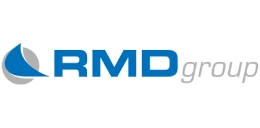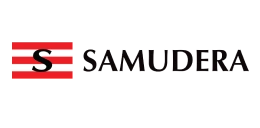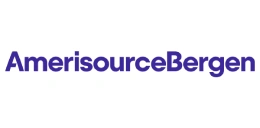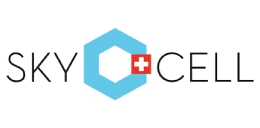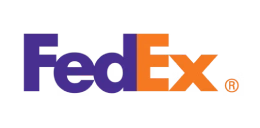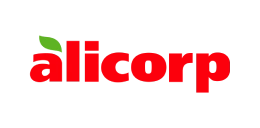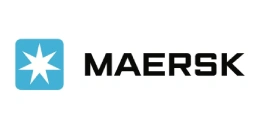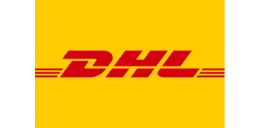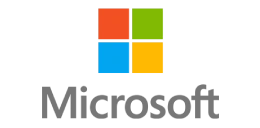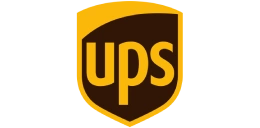Technology Transfer Services: From Innovation to Commercialization
-1.webp)
Technology Transfer Services Overview:
Technology transfer services enable the smooth transfer of innovations, knowledge, and technical skills from universities, research institutions, or firms to business enterprises. This enables bridging the innovation-market gap such that advanced technologies are developed, scaled, and commercialized successfully.
- Technology transfer entails the licensing of patents, proprietary information, or manufacturing techniques to production and distribution partners.
- It speeds up product development lifecycles, lowers R&D expenses, and allows companies to build on available innovations instead of reinventing solutions.
- Typical uses are pharmaceuticals, biotechnology, clean energy, advanced manufacturing, and IT.
Technology transfer services help organizations efficiently move innovations, research, or developed technologies from one entity to another. Technology transfer process involves identifying, protecting, and licensing intellectual property, ensuring the transfer aligns with both parties' strategic goals. It includes negotiating agreements, facilitating partnerships, and providing support for commercialization. Technology transfer is crucial for fostering innovation, expanding market reach, and ensuring the smooth integration of new technologies across industries while maximizing their impact.
Objective of Technology Transfer Services:
- Commercialization of Research: Filling the gap between innovative academic research and practical applications by finding market-ready innovations and linking them to companies that can scale production. This converts theoretical innovations into products that generate revenues, to the benefit of innovators and industries alike.
- Cost and Time Efficiency: Companies save tens of millions in R&D costs and achieve a vital competitive advantage by applying already developed technologies instead of investing funds in unnecessary R&D.
- Market Expansion: Technology transfer services enable businesses to enter new geographic or sectoral markets by adapting proven technologies to local needs, regulatory frameworks, and consumer preferences—minimizing entry barriers.
- Risk Mitigation: The adoption risk is reduced by thorough validation and partner screening, which guarantees that transferred technologies are technically sound, compliant with the law, and profitable before being used.
- Compliance Assurance: Navigating complex regulatory landscapes (e.g., FDA, ISO) during knowledge transfer, guaranteeing that processes meet safety, quality, and environmental standards from day one.
- Knowledge Dissemination and Skill Development: Technology transfer services often include training programs and workshops designed to equip teams with the necessary skills and knowledge to effectively utilize and implement the transferred technology. This helps build internal capabilities, ensuring that the technology is adopted successfully.
- Intellectual Property (IP) Protection and Strategy: One of the critical functions of technology transfer services is to protect the intellectual property associated with the technology being transferred. This involves creating a comprehensive IP strategy, including patent filings, trademarks, and licensing agreements, ensuring that the technology remains protected as it moves through the commercialization process.
- Facilitation of Strategic Partnerships: Through technology transfer services, research institutions, startups, and mature firms are brought together to form strategic alliances that foster innovation. Strategic alliances formed through such partnerships can increase the commercialization process, tap into new markets, and distribute the risks of technology deployment.
Types of Technology Transfer Services:
| Service Type | Description | Common Sectors/Industries |
|---|---|---|
| Academic to Industry | Licensing university-developed innovations (patents, software) to corporations for commercialization, commonly seen in biotech and engineering sectors. | Biotech, IT, Engineering |
| Cross-Border Transfer | Adapting technologies for international markets while addressing local regulations, crucial for pharmaceuticals and renewable energy expansion. | Pharmaceuticals, Renewable Energy |
| Process Scale-Up | Transitioning lab-proven technologies to mass production, overcoming manufacturing challenges in chemicals and advanced materials industries. | Chemicals, Advanced Materials |
| Joint Ventures | Strategic partnerships combining R&D and manufacturing capabilities, frequently used in automotive and medical technology collaborations. | Automotive, MedTech |
| IP Licensing | Monetizing intellectual property through royalty agreements, widely applied in electronics and consumer goods sectors. | Electronics, Consumer Goods |
IMARC’s Technology Transfer Services:
At IMARC Group, we provide end-to-end technology transfer services to help businesses make decisions, from identification to commercialization, tailored to their industry and strategic goals—across India and globally. Our data-driven strategy delivers actionable insights by integrating industry knowledge, research databases, and market research.
Our Technology Transfer Services Include:
- Technology Scouting & Evaluation: We utilize our international network of research institutes and patent pools to find you the latest innovations that support your business objectives. Our methodical system makes sure that you have access to the most suitable technologies for your sector and marketplace requirements. Whether you're looking for emerging tech to complement your current product lines or seeking disruptive technologies to propel your business into new markets, we provide you with insights tailored to your specific needs.
- Feasibility Analysis: We provide thorough analysis of technical feasibility, market requirements, and regulatory environments to measure the commercial prospects of a technology. This assists you in taking informed decisions prior to investing in development or adoption. Our team of experts performs comprehensive market sizing, demand forecasting, and risk assessment to predict the success of a technology in various market conditions. Our feasibility studies also include a detailed financial analysis, evaluating the total cost of ownership, expected ROI, and break-even points. We also examine potential obstacles such as technological complexity or market entry barriers that could affect the adoption process.
- IP Valuation & Negotiation: We analyze patent robustness and intellectual property worthiness to ensure that you receive appropriate licensing conditions. We negotiate arrangements that safeguard your interests while allowing constructive collaboration among innovators and adopters.
- Knowledge Transfer & Training: We created tailored training programs to ease technology uptake in your teams. This encompasses practical workshops, guidebooks, and support to grant day-one operation competence.
- Regulatory & Compliance Support: We walk you through intricate local and global standards (GMP, ISO, etc.) to ensure your technology adheres to all necessary regulations. Our service prevents expensive delays and ensures compliance at every stage of implementation, from design and production to market release. Our experts also stay ahead of evolving regulatory frameworks to guide your technology through shifting standards.
- Commercialization Strategy: We create customized go-to-market strategies, including pilot testing, production ramp-up, and the establishment of partner ecosystems. Our approaches are designed to optimize market reach, improve adoption rates, and hasten ROI on your technology investments. We take a holistic approach, integrating market analysis, customer engagement strategies, and pricing models to accelerate time-to-market. We also provide post-launch market support, helping refine your strategy as you gather real-world feedback. We offer insights into customer behavior, channel performance, and potential improvements to further enhance your market positioning and product lifecycle.
- Post-Transfer Monitoring: We offer recurring performance monitoring and optimization services to ensure that your acquired technology delivers maximum value. Our data-driven approach identifies areas for improvement and provides recommendations to enhance operational efficiency. We track KPIs, customer feedback, and usage patterns, allowing you to adjust your approach based on real-time performance metrics. In addition to performance monitoring, we also offer regular health checks for technology upgrades and adaptations, ensuring that your technology evolves with market trends and remains competitive in a fast-changing environment.
At IMARC Group, our goal goes beyond just technology transfer—your organization receives and applies innovations that bring tangible competitive edge and lasting value. With our established methodology, global innovation networks, and extensive technical expertise, we convert challenging technology adoption into strategic growth prospects. As a flourishing business looking to commercialize technology, our end-to-end solutions enable you to:
- Technology Readiness Level
- IP Protection Strength
- Regulatory Compliance Requirements
- Manufacturing Scalability
- Market Potential & Competitive Positioning
- Partner Capabilities & Cultural Alignment
By leveraging these criteria alongside our efforts to minimize adoption risk, accelerate time-to market, and maximize ROI, we ensure your technology transfer decisions are optimal and drive sustainable growth and market dominance.
Benefits of Our Using Technology Transfer Services:
At IMARC Group, our technology transfer services enable companies to accelerate innovation with reduced costs and risks. By closing the gap between research and commercialization, we enable businesses to obtain advanced technologies that deliver quantifiable outcomes. Some key benefits include:
- Fast-Tracked Innovation: Our pre-validated solutions cut development cycles significantly, enabling businesses to avoid long R&D cycles. We find market-ready technologies within global research networks, make quick feasibility checks, and optimize implementation through systematic knowledge transfer - bringing business products to market ahead of competitors.
- Cost Savings: By connecting businesses with existing intellectual property, we eliminate the need for expensive, time-consuming in-house R&D. Our technology transfer services include negotiating favorable licensing agreements, which significantly reduce capital expenditure while providing access to cutting-edge technologies. This allows businesses to maximize their return on investment without heavy upfront costs.
- Risk Reduction: We reduce the risk of technology adoption by performing thorough technical verification, pilot testing, and regulatory compliance assessments. Our experts evaluate the scalability, operational fit, and market readiness of each technology before transfer, ensuring that businesses experience a smooth integration with minimal disruption. We also offer continuous support during the implementation phase to ensure successful technology adoption.
- Competitive Edge: We help businesses gain access to exclusive, patented technologies that allow them to differentiate their offerings in competitive markets. Our team sources niche innovations that align with industry trends and customer demands, giving businesses a unique advantage. By leveraging these technologies, companies can create standout value propositions that appeal to both customers and investors.
- Global Reach: Our cross-border technology transfer is what works for local markets. We bridge regional regulations, adjust solutions to suit culture, and create international partnerships - allowing for smooth global expansion with locally optimized products.
- Market Intelligence & Strategy: We provide businesses with valuable market insights, including trends, customer needs, and competitor analysis, to help guide the successful commercialization of new technologies. Our expertise in market research enables us to offer strategic advice, ensuring that technologies are introduced into the right markets and have the highest chance of success.
- Strategic Partnerships: We help businesses identify and establish strategic partnerships with research institutions, technology providers, and potential customers. Our vast network of global connections ensures that companies can collaborate with the right partners to enhance technology development, market access, and long-term success.
What Makes IMARC Different?
- Diverse Client Portfolio Across Industries: IMARC stands out for its extensive experience serving major clients across a variety of industries, including pharmaceuticals, clean energy, high-tech, and consumer goods. Our deep understanding of industry-specific challenges and opportunities enables us to offer customized solutions that meet the unique needs of each sector. Whether it’s helping a global pharmaceutical leader comply with FDA regulations or assisting a clean energy company scale its innovations, we have a proven track record of success.
- Leveraging a Global Client Base: Our vast and diverse client base spans across continents, giving us the unique ability to understand and address global market dynamics. We leverage insights from our international clientele to offer market-driven solutions, ensuring that the technologies we facilitate transfer are not only scientifically viable but also commercially competitive in various global markets.
- End-to-End Ownership: We facilitate each step of the transfer process - starting with intellectual property valuation, through technical validation and scaling, to ultimate commercialization and post-transfer optimization. In contrast to consultancies that only do initial matching, we stay involved to ensure effective implementation and ROI realization.
- Transparent Process: We manage each project with clear roadmaps, set milestones, and flat-fee pricing. Our process ensures full transparency from the initial patent evaluation to the final technology deployment, keeping you informed at every stage and ensuring accountability throughout.
Industries IMARC Group Serves:
We offer technology transfer services across various sectors, including:
- Life Sciences & Pharma
- Renewable Energy
- Advanced Manufacturing
- IT & AI
- AgriTech
FAQs About Technology Transfer:
- What is technology transfer?
- Why is technology transfer critical for business success?
- How much does it cost for technology transfer services?
- When should you go for technology transfer services?
- What are the key steps for technology transfer?
- What factors influence technology transfer between two parties?
- What industries does IMARC specialize in technology transfer services?
- How long does the technology transfer process take?
- Does IMARC provide post-selection support?
- What tools are used for technology transfer?
- How does IMARC mitigate risks in technology transfer?
Our Clients
Contact Us
Have a question or need assistance?
Please complete the form with your inquiry or reach out to us at
Phone Number
+91-120-433-0800+1-201-971-6302
+44-753-714-6104
